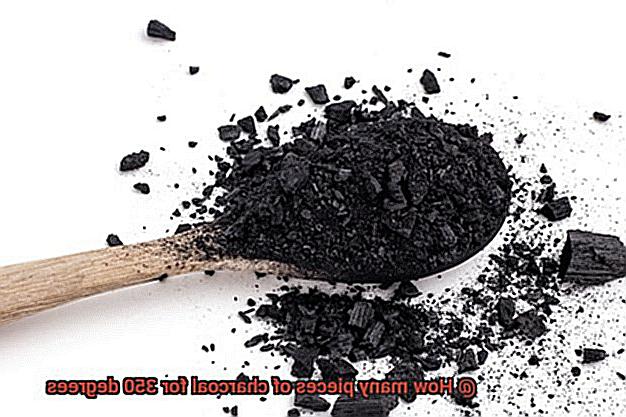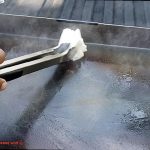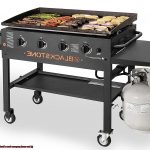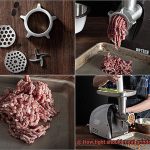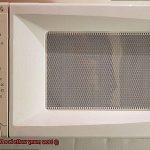Ready to fire up your grill and cook up a scrumptious meal? But before you do, let’s talk about the most crucial factor in charcoal cooking – temperature control. Specifically, how many pieces of charcoal you need to get your grill to the perfect 350 degrees.
Cooking with charcoal can be intimidating, especially when it comes to nailing the right temperature. You don’t want your food raw or overcooked, right? That’s where understanding the science behind charcoal combustion and airflow comes in handy.
So, how many pieces of charcoal do you need for 350 degrees? The answer is not as simple as a one-size-fits-all solution. It depends on various factors such as the size and design of your grill, quality of charcoal used, and cooking method employed.
But don’t worry; we’ve got you covered. In this post, we’ll explore everything you need to know about achieving that perfect 350-degree temperature on your grill. From discussing the essential factors that affect temperature control to providing tips on how to adjust airflow and lid position for optimal results – we’ve got it all covered.
By the end of this article, you’ll be a pro at controlling charcoal temperature like a boss and impressing your friends and family with mouth-watering grilled delicacies.
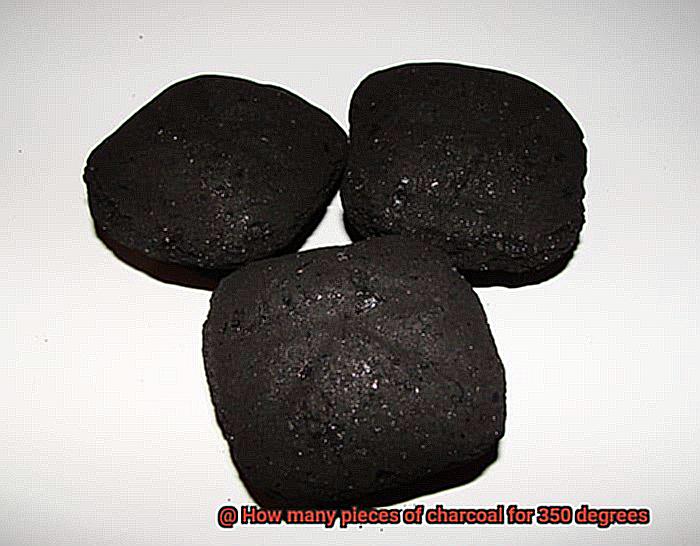
Contents
What is the Ideal Temperature for Grilling?
For most foods, the sweet spot falls between 350 and 450 degrees Fahrenheit.
Maintaining a consistent temperature is essential for ensuring even cooking and avoiding disappointingly undercooked or overcooked food. To achieve this consistency, you need to know how many charcoal pieces are required to hit that magical 350-degree mark.
Charcoal grills offer more control over temperature and flavor than their gas counterparts, but they do require a little more work to set up. The number of charcoal pieces needed to reach 350 degrees depends on several factors, such as the size of your grill, the type of charcoal you’re using, and airflow. As a general rule, you should aim for around 30 pieces of charcoal on a standard-sized grill.
However, it’s important to remember that these guidelines are just that – guidelines. You may need to adjust the number of charcoal pieces based on factors like weather conditions or the type of food you’re cooking. For instance, vegetables require a lower temperature than meats or poultry, so you may need to dial down the heat.
Speaking of weather conditions, it’s worth noting that wind or cold temperatures can cause your grill to lose heat more quickly. When grilling in these conditions, be prepared to add more charcoal or adjust your vents accordingly.
Factors to Consider When Determining Charcoal Amount
Grilling is an art that requires precision, patience, and the right amount of charcoal. But how do you know how much charcoal is needed to achieve the perfect temperature? As an expert in factors to consider when determining charcoal amount for grilling, I have compiled some research notes to help you out.
First and foremost, the size and type of your grill are crucial factors to consider. Different grills require different amounts of charcoal to reach and maintain a certain temperature. A smaller grill may require less charcoal than a larger grill, so make sure you adjust accordingly.
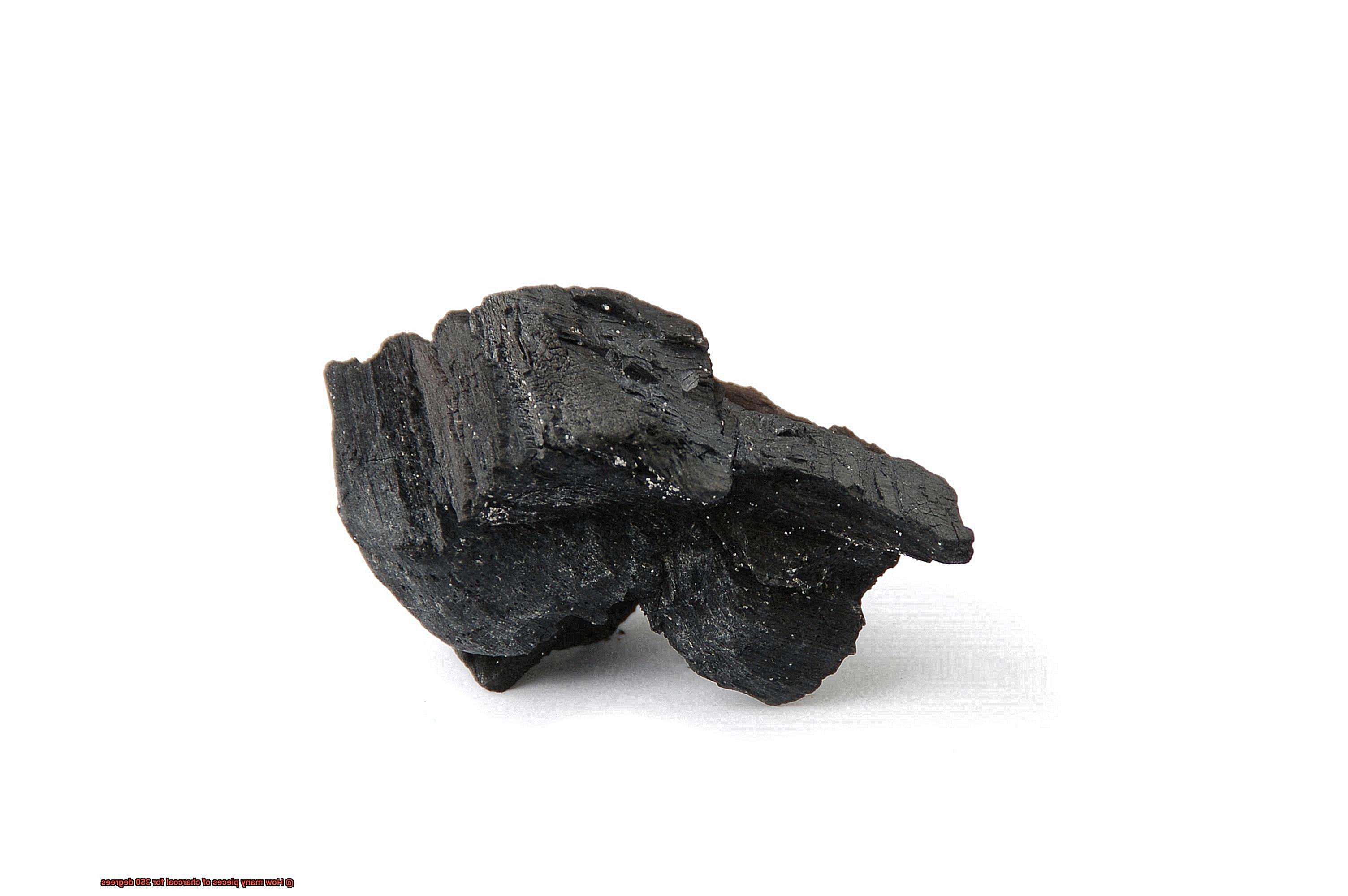
Next, don’t forget about the impact of weather conditions. Windy or cold weather can affect the amount of charcoal needed to reach and maintain your desired temperature. In windy conditions, you may need to use more charcoal to compensate for the heat loss caused by the wind.
The type of food being grilled is also important. Different types of food require different temperatures, which means different amounts of charcoal are needed. For example, if you’re grilling meat that needs to be cooked at a high temperature, you will need more charcoal than if you were grilling vegetables that only require a low temperature.
Furthermore, the duration of the grilling process should also be considered. If you’re planning on grilling for an extended period of time, you will need more charcoal than if you were only grilling for a short period.
To summarize, the factors to consider when determining charcoal amount are:
- Size and type of your grill
- Weather conditions
- Type of food being grilled
- Duration of the grilling process
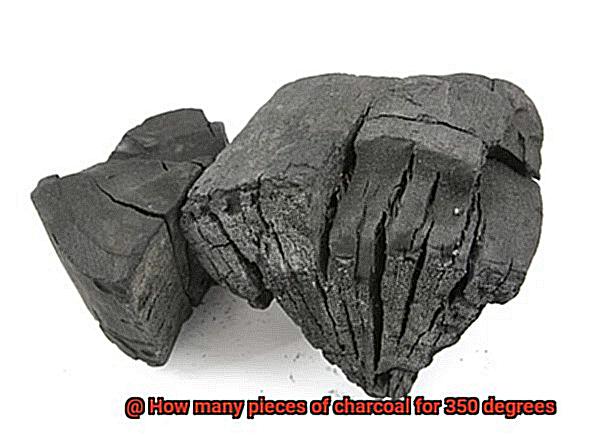
How Many Briquettes Should You Use Per Pound of Meat?
One of the most crucial elements in achieving that perfect sear on your meat is the amount of charcoal you use. While there’s no hard and fast rule, the 1:1.5 ratio is a good starting point. This means using one pound of charcoal for every 1.5 pounds of meat. But hold on, there are several factors to consider that can affect how much charcoal you need.
First off, let’s talk about the type of grill you’re using. A kettle grill may require more charcoal to maintain a consistent temperature while a gas grill may need less. The cooking method is another factor to consider. Direct grilling requires more charcoal to achieve higher temperatures, while indirect grilling or smoking requires fewer briquettes.
But it’s not just the grill and cooking method that affects the amount of charcoal needed. External factors like wind, humidity, and altitude can also impact your cooking time and temperature control. These factors make it important to monitor your grill closely and adjust the amount of charcoal used as needed.
As you experiment with different amounts of charcoal, remember that the desired level of heat also plays a role. If you’re aiming for a high-heat quick cook, more charcoal is needed. But if you prefer a slower, controlled cook, fewer briquettes may be required.
In summary, finding the right amount of charcoal for your specific setup and preferences takes practice and experimentation. Keep an eye on environmental factors and adjust accordingly. With patience and persistence, you’ll soon be grilling up perfectly cooked meats every time.
Lump Charcoal Versus Briquettes
While both types of charcoal have their advantages and disadvantages, one of the most significant differences between them is how they perform when it comes to reaching and maintaining a specific temperature, such as 350 degrees.
Lump charcoal is made by burning natural wood, resulting in a hotter and faster burn than briquettes. To reach and maintain 350 degrees, you may need to use more pieces of lump charcoal. However, the smokier flavor and shorter cooking time make it worthwhile.
Briquettes, on the other hand, are made by compressing charcoal powder with binders and additives. They burn evenly and for longer, making them ideal for extended cooking periods or larger grills. Fewer briquettes may be needed to reach and maintain 350 degrees.
However, it’s not just about the type of charcoal used. The size of the grill and external factors such as wind and temperature play a role in determining the optimal number of pieces needed to achieve a specific temperature. A smaller grill may require fewer pieces than a larger grill.
Ultimately, there’s no one-size-fits-all answer to how many pieces of charcoal are needed for 350 degrees. Experimentation is key. Try different amounts of both lump charcoal and briquettes while taking into account the size of your grill and external factors. With some trial and error, you’ll find your perfect balance for achieving and maintaining that ideal temperature. Happy grilling.
Weather Conditions and Charcoal Amount
Understanding the impact of weather conditions on charcoal amount is crucial to achieving the ideal grill temperature of 350 degrees. Wind and temperature are two primary factors that can affect the amount of charcoal required for a successful grilling experience.
Wind can easily blow away heat from the grill, which means you’ll need extra fuel to maintain a consistent temperature on gusty days. To counteract this, stock up on additional charcoal to ensure a steady flame that will keep your meats perfectly cooked.
Temperature is another critical factor to consider. On hot summer days, the ambient temperature can help maintain the grill’s heat, requiring less charcoal. In contrast, colder temperatures in winter will demand additional charcoal to compensate for the drop in heat. Adjusting the amount of charcoal based on weather conditions is key to achieving the perfect temperature for your grilled delights.
Altitude is also an essential factor when it comes to charcoal amount. At higher altitudes, thinner air means less oxygen is available to fuel the fire, resulting in slower cooking times and cooler grill temperatures. To ensure your food is cooked correctly, bring extra charcoal when grilling in the mountains.
Adjusting Your Vents for Optimal Temperature Control
Look no further than the art of adjusting your vents for optimal temperature control on a charcoal grill. As an expert in this field, I am here to provide you with the tools and knowledge necessary to achieve perfectly cooked meats every time.
First, let’s talk about the two types of vents found on a charcoal grill: intake vents and exhaust vents. Intake vents are located at the bottom of the grill and allow air to flow into the grill, while exhaust vents are located at the top and allow hot air to escape. Understanding how these vents work and how to manipulate them is crucial for achieving your desired temperature.
To start, open both intake and exhaust vents fully to allow maximum airflow. After about 10-15 minutes, use a thermometer to check the temperature of your grill. If it is too high, partially close down on the intake vent to limit the amount of oxygen flowing into the grill. Conversely, if it is too low, open up the intake vent more to allow for more oxygen flow.
It is important to note that adjusting your vents should be done gradually and with close monitoring of the temperature. Changes in airflow can take some time to affect the temperature of your grill. Additionally, weather conditions such as wind can impact how much charcoal is needed and how your vents should be adjusted. On a windy day, you may need to use more charcoal or adjust your vents differently to maintain a consistent temperature.
Beyond achieving a specific temperature, manipulating your vents can also impact cooking times and flavor. For example, opening the intake vent more can result in a hotter fire and sear marks on your meat. Experimenting with different vent adjustments can lead to delicious flavor profiles that are unique to your grilling style.
Tips for Achieving Perfect Grilling Temperatures
Grilling is a beloved pastime, but it can be frustrating when you can’t seem to get the temperature just right. Fear not. We have compiled some tips to help you achieve the perfect grilling temperature every time.
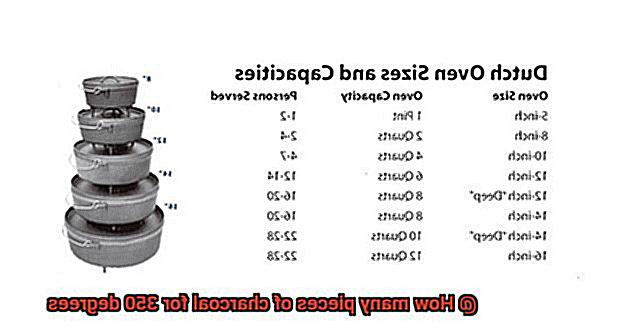
Tip #1: Start with the Right Amount of Charcoal
Using the right amount of charcoal is crucial for achieving the perfect temperature. As a rule of thumb, use 30-50 briquettes for a small grill, 50-75 for a medium-sized one, and 75-100 for a large grill. However, this can vary depending on your grill size, weather conditions, and altitude.
Tip #2: Use a Chimney Starter
A chimney starter is a fantastic tool for even heat distribution and consistent temperatures. Fill it with your desired amount of charcoal, light it up, and wait until the coals are hot and glowing. Carefully pour them into your grill.
Tip #3: Create a Two-Zone Fire
Creating a two-zone fire allows you to cook food at different temperatures simultaneously. Pile your lit coals on one side of the grill and leave the other side empty. Sear your meat over high heat on the charcoal side and then move it to the cooler side without direct heat to finish cooking.
Tip #4: Adjust the Vents
The vents on your grill play an important role in controlling temperature. To increase it, open them wider to allow more oxygen to fuel the fire. To decrease it, close them partially to reduce oxygen flow.
Tip #5: Monitor the Temperature
Using a thermometer to monitor your grill’s temperature is key. For indirect grilling, aim for around 350 degrees Fahrenheit. Adjust air vents or add/remove charcoal as needed.
ieRNhjBIN_M” >
Conclusion
Mastering the art of grilling is no easy feat, but with the right knowledge and tools, you can elevate your skills and achieve perfect temperatures like a pro. The sweet spot for grilling is between 350 and 450 degrees Fahrenheit, but the amount of charcoal required to reach this temperature varies based on several factors.
To determine the right charcoal amount for your grill, consider its size, design, weather conditions, type of food being grilled, and cooking time. Don’t be afraid to experiment with different amounts while taking into account external factors such as wind, humidity, and altitude.
Lump charcoal burns hotter and faster than briquettes but may require more pieces to reach 350 degrees. Briquettes burn evenly and for longer periods, making them ideal for larger grills or extended cooking times. Adjusting your vents is crucial in achieving optimal temperature control.
Using a thermometer to monitor your grill’s temperature is essential in ensuring perfectly cooked meats every time. With patience and persistence, you’ll soon become a master at controlling your grill’s temperature like a boss.

